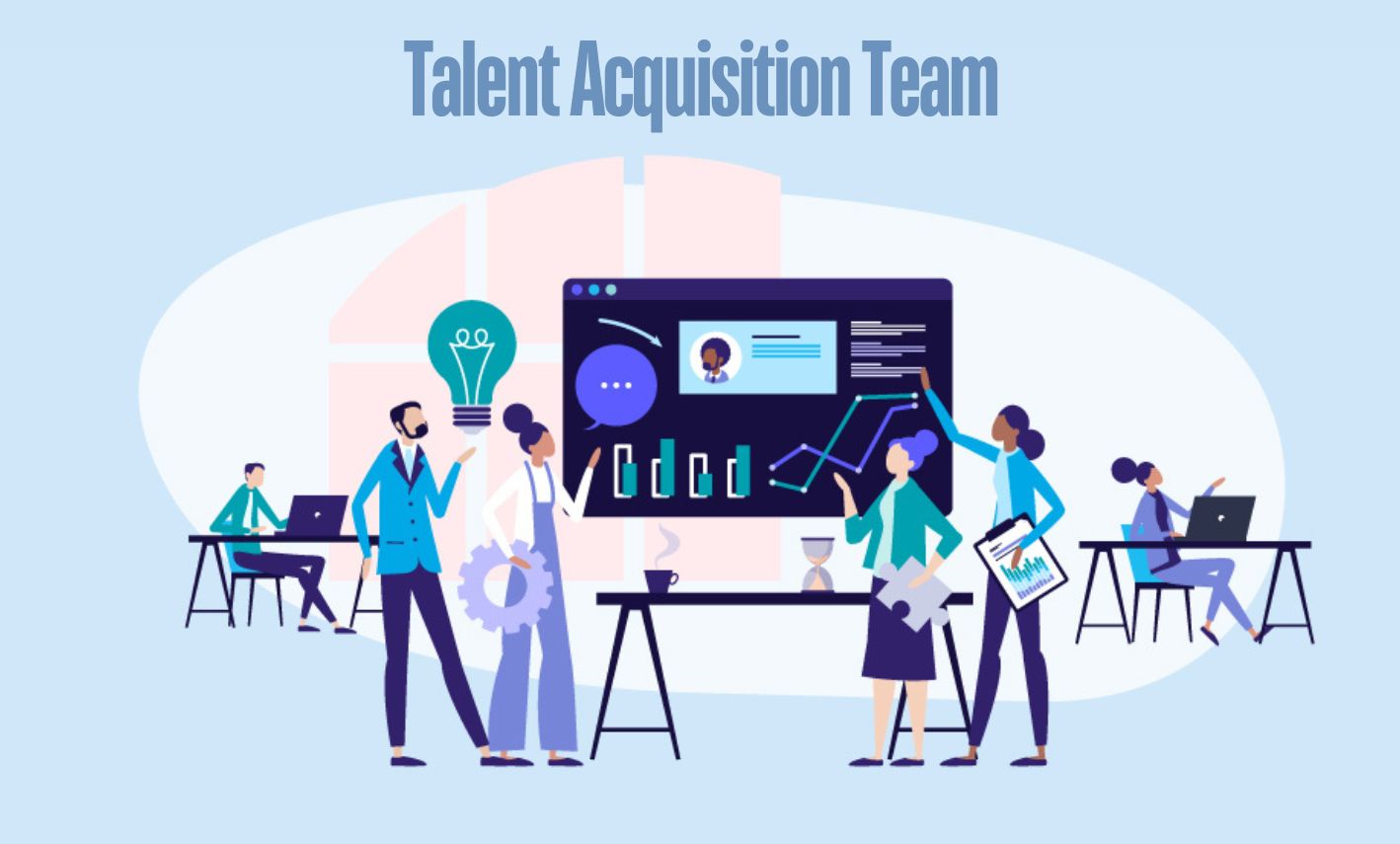It is more important than ever to draw in and keep top talent in today’s competitive employment market. A proficient talent acquisition team can greatly impact the effectiveness with which a business may achieve its strategic objectives. Here are seven strategies for creating a top-notch talent acquisition team that can successfully attract the most qualified applicants for your business.
Build a Talent Acquisition Strategy
A productive talent acquisition team starts with a well-defined and thorough personnel acquisition plan. This plan must be in line with the overarching business objectives of your organization and consist of:
Workforce planning:
Understand your organization’s future needs.
Employer Branding:
To build a powerful employer brand to draw in top people.
Diversity and Inclusion:
To attract diverse candidates implement initiatives.
Metrics and Analytics:
Monitoring the success of your hiring initiatives with data.
Your team will have a roadmap to focus their efforts and gauge progress if you establish a clear direction for them.
Assemble a Diverse Team
Diverse viewpoints, experiences, and ideas can result in more creative solutions and improved decision-making when they are included in your talent acquisition team. Try to include people with a variety of experiences, abilities, and specializations in things like:
- Recruitment Marketing
- Sourcing
- Interviewing
- Onboarding
A diverse staff has a higher chance of drawing in a diverse pool of applicants, which will assist your business in creating a more inclusive workforce.
Invest in Training and Development
Even the most skilled talent acquisition team members require ongoing training to remain on top of industry developments and advance their careers. It is crucial to have regular training sessions on subjects like sophisticated sourcing strategies, successful interviewing, and the newest technologies in recruitment. To keep your team’s skills current and motivation high, encourage them to participate in webinars, industry conferences, and certification programs.
Leverage Technology and Tools

The appropriate technologies can improve team productivity and expedite your talent team process. Put money into:
Applicant tracking system:
This will help you manage the recruitment process from start to finish.
Recruitment marketing platform:
This tool will help you enhance your employer branding and get more views.
AI and Automation tools:
These tools will help you in resume screening and candidate matching.
These tools will help your talent acquisition team. These tools will lessen the administrative team’s burden so they will do more productive work.
Create a Positive Candidate Experience
The experience of candidates is a key factor in your capacity to draw in top personnel. A satisfying experience can set your business apart from rivals. Make sure the hiring procedure you use is:
Transparent:
Keep your candidates informed at every stage.
Responsive:
Be quick to respond and offer criticism.
Respectful:
Regardless of the result, show respect for every candidate.
Stronger employer branding, greater referrals, and higher acceptance rates can all result from a positive candidate experience.
Foster Collaboration and Communication

The secret to success is having your talent acquisition team collaborate and communicate effectively. Team members can discuss problems, exchange ideas, and come up with solutions when they get together for regular meetings, whether official or informal. To keep everyone informed and promote a culture of cooperation and support, collaborative tools and platforms.
Measure and Optimize Performance
Lastly, it’s critical to track the effectiveness of your talent acquisition team initiatives and make continuous improvements. Monitor the following key performance indicators (KPIs):
- Time to Fill
- Cost per Hire
- Quality of Hire
Make data-driven decisions to improve your recruitment strategy by using this data to pinpoint areas that need development.
Conclusion
The process of creating a successful talent acquisition team is constant and calls for a strategic approach, technological and human resource investments, and a dedication to continual improvement. By doing these seven actions, you can assemble a team that helps your company succeed in the long run while also drawing in the greatest talent.
FAQs
Q: What is a talent acquisition team?
A: A talent acquisition team is a group of professionals dedicated to sourcing, attracting, interviewing, and hiring top talent for an organization. Their goal is to build a robust workforce that aligns with the company’s strategic goals and culture.
Q: Why is a talent acquisition strategy important?
A: A talent acquisition strategy provides a clear roadmap for recruiting efforts. It ensures that the team’s actions align with the organization’s overall business goals, helps in planning for future workforce needs, and creates a strong employer brand to attract top candidates.
Q: How do I create an effective talent acquisition strategy?
A: To create an effective strategy, you should:
- Assess your organization’s current and future staffing needs.
- Develop a strong employer brand.
- Implement diversity and inclusion initiatives.
- Use metrics and analytics to track and measure the effectiveness of your recruitment efforts.
Q: What should I look for when assembling a talent acquisition team?
A: When assembling your team, look for diverse individuals with a variety of skills and expertise, including recruitment marketing, sourcing, interviewing, and onboarding. Diversity within the team leads to innovative solutions and better decision-making.
Q: How can I ensure continuous development for my talent acquisition team?
A: Invest in regular training and development opportunities such as advanced sourcing techniques, effective interviewing skills, and the latest recruitment technologies. Encourage attendance at industry conferences, webinars, and certification programs.





